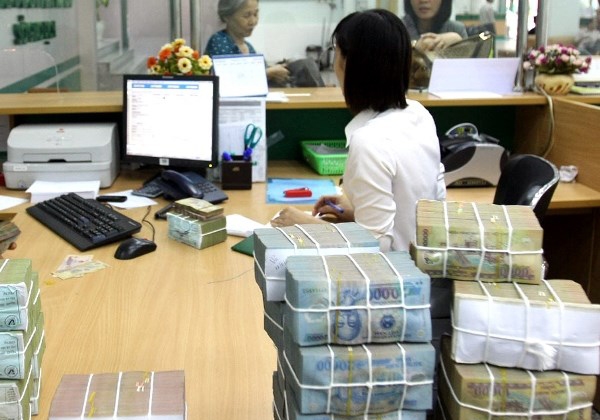 Economy
Economy

The 2015 results of Vietnamese banking testified to an ongoing process of recognising and cleaning up problem assets, a credit positive, Moody’s said in a new report released midweek.
 |
| "There is now both an acceleration in loan growth -- mirroring a cyclical economic upturn -- and higher loan provisions related to problem assets, including securities from the Việt Nam Asset Management Company (VAMC)," Eugene Tarzimanov, Moody’s vice-president and senior credit officer, said. — Photo VNA |
HÀ NỘI (VNS) — The 2015 results of Vietnamese banking testified to an ongoing process of recognising and cleaning up problem assets, a credit positive, Moody’s said in a new report released midweek.
The report is titled ‘Banks - Việt Nam: FY2015 results point to enhanced transparency on asset risks but rising pressure on profitability and capital’. The rating agency said the corresponding increase in loan-loss provisions was also raising credit costs for banks, thus putting pressure on profitability.
"There is now both an acceleration in loan growth -- mirroring a cyclical economic upturn -- and higher loan provisions related to problem assets, including securities from the Việt Nam Asset Management Company (VAMC)," Eugene Tarzimanov, Moody’s vice-president and senior credit officer, said.
"While these developments have fostered enhanced transparency on asset risk, we expect the continued build-up in large provisions will translate into weak bottom line results," Tarzimanov said.
Moody’s report said greater transparency on asset risks was the result of two regulatory developments. First, the acceleration in the carve-out and recognition of bad loans, as reflected in an increase in banks’ holdings of VAMC securities, is in line with the central bank’s mandated resolution to reduce NPLs to below three per cent of the loans by the end of 2015. Second, a tightening in the regulatory guidance on NPL recognition follows the full implementation of Circular 02/09 in April 2015 regulating asset classification and risk provision.
While some uncertainties remain as to the true level of impaired assets in the banking system, the change in problem asset composition is in line with Moody’s view that current asset quality metrics have become more transparent.
Reflecting the increased recognition of problem assets through VAMC bonds, the 10 Moody’s-rated Vietnamese banks posted a sharp 49 per cent increase in credit costs which reached VNĐ24.9 billion (US$1.1 million) in 2015.
The highest rated banks also reported declines in their equity/total asset ratios in 2015, reflecting not only higher credit costs, but also the system’s rebound in credit growth.
For 2016, Moody’s expects a further weakening in the banks’ capital buffers, as credit growth and provisioning expenses outpace the capacity for internal capital generation. Banks also have few sources of external capital, given limited domestic resources and restrictions on foreign investments in banks.
These observations continue to underpin Moody’s concern that Vietnamese banks’ weak capital levels will remain a constraining factor for their credit profiles, even as the pressure on asset quality has stabilised.
Finally, all rated banks reported a tightening in liquidity in 2015, as they allocated more of their assets to accommodate the rebound in loan growth. As a result, their holdings of liquid assets declined, a credit negative. — VNS




